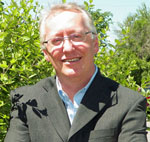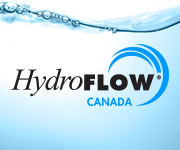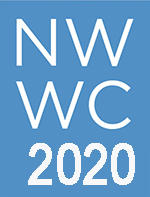 |
||||||||||||||||||||||
| Subscribe | Past Issues | www.cwwa.ca | Water Source Magazine | ||||||||||||||||||||||
|
CWWA News
Now is your chance to have a say on your national water & wastewater conference. What topics should we be addressing at a national level? What would you really like to learn about? Better yet, what are you doing that could be of interest to the rest of us, and you can share? We’ve put the call for presentations out there already (www.nwwc2020.ca). We always get a pretty good response. But more and more, we find we are ‘curating’ the program to address the most pressing and relevant issue of our sector. So please let us know what topics you feel we could discuss … and be sure to suggest some great presenters.
With COVID-19 making headlines, leading to global travel restrictions, and strict quarantines in China members should be considering their pandemic preparedness and making sure they are prepared if the virus continues to spread. The dangers of a major pandemic are not just a sick workforce - with so much of our goods coming from China, a major disruption in manufacturing could have major impacts on availability of crucial supplies and chemicals for our members.
Federal Initiatives
The guidelines state: “It is not considered necessary to establish a maximum acceptable concentration for chloramines in drinking water, based on the low toxicity of monochloramine at concentrations found in drinking water. Any measures taken to limit the concentration of chloramines or their by-products in drinking water supplies must not compromise the effectiveness of disinfection”. Plastic packaging is the biggest contributor of plastic waste in Canada, followed by the automotive, textile, and electrical and electronic equipment sectors. The release of synthetic microfibres from wastewater treatment systems (WWTS) is also anticipated to represent a significant source of microplastic pollution. The purpose of this report is to summarize the current state of the science regarding the potential impacts of plastic pollution on the environment and human health, as well as to guide future research and inform decision-making on plastic pollution in Canada. It provides a review of the available information on plastic pollution, including its sources, occurrence, and fate, as well as on the potential effects of plastics on the environment and human health. Microplastics are ubiquitous in the environment, the report notes - they may travel from soil into groundwater and have been detected in both indoor and outdoor air. Microplastics have been detected in up to 93% of bottled water samples from outside of Canada, with concentrations varying across bottle type. In the case of tap water, some studies have detected microplastics while others have not. The maximum acceptable concentration (MAC) for total barium in drinking water is 2.0 mg/L (2000 μg/L). While the main use of barium is as a drilling fluid additive in oil and gas exploration, it is also used as a contrast agent in X-ray diagnostic tests and in a wide array of products, including plastics, rubbers, paint, glass, carpets, ceramics, sealants, furniture, fertilizers and pesticides.
In order to build a Conference program that maximizes our diverse delegates and to create a program that will interest everybody, we need YOU to share your ideas, concepts, experience and research. We’re planning sessions that will cross all sectors of our industry and connect all of our delegates, but we’ll also feature sessions that will focus on national issues that will appeal to you and your professioal focus. CWWA is excited to be partnering with the Canadian Water Summit (CWS) to locate our usual program of federal policy and initiatives alongside the CWS. The first day (June 10) will feature CWWA curated content that you all have come to expect from the Window on Ottawa. Together, we will help build important conversations on the policy and governance issues which are key to unlocking Canada’s blue economy. Member News
How are cities and communities of all sizes tackling their environmental challenges? Find out with our upcoming five-part webinar series examining trends and best practices in municipal energy, waste, water, transportation and land use initiatives. From emerging trends in Canada’s water sector, to financing options for your energy efficiency initiative, this series delivers solutions to the sustainability challenges we all face.
The Water Environment Federation released several guidance documents on the Coronavirus. With research on the topic still being developed and with global attention on the pandemic, the guidance documents addresses how the water sector can approach the issue. The report notes that “…it is important that water sector professionals keep informed on the attributions of this virus and any measures needed to protect both workers and public health, in general.” Provincial News
On January 18, 2020, the Quebec Court of Appeals widened the scope of a judgment that ordered the federal government and two private companies - Valcartier Real Estate Corporation and General Dynamics - to pay citizens of Shannon, QU, who suffered damage from the contamination of their water supply that some allege, gave them deadly cancer. On January 31, 2020, the Province of Manitoba and City of Winnipeg released the Interim Phosphorous Reduction and Nutrient Removal Implementation Plan. The report includes an overview of all three phases of the City of Winnipeg’s plan for the North End Winnipeg Pollution Control Centre (NEWPCC) project including cost estimates and preliminary timeframe for completion of the NEWPCC upgrade. Phase 1 of the NEWPCC Master Plan - Power Supply and Headworks Facility – will see the power supply upgrade completed in 2020. Phase 2 – Biosolids Facility – will see design work initiated in 2020 following City Council’s approval of the 2020-23 sewer rates. Snippings & Clippings
Global News Hundreds of freight trains are at a standstill across Ontario, not moving because of ongoing rail blockades. One organization has now raised concerns about the impact it could have on drinking water since the chemicals needed to treat it are transported by rail. NACWA Four of the 2020 Presidential Candidates – Vice President Joe Biden, Senator Amy Klobuchar, Tom Steyer and Mayor Pete Buttigieg – convened February 16 at the University of Nevada, Las Vegas for the first-ever Presidential Candidate Infrastructure Forum. The event, Moving America Forward, was hosted by 12 labor unions and trade groups, including the Value of Water Campaign, of which NACWA and numerous NACWA individual member agencies and affiliates are supporting organizations. The Hill Experts and advocates on Tuesday criticized the Environmental Protection Agency’s (EPA) proposed rule to combat lead in the water supply, calling for the agency to require that service lines containing lead be replaced. CBC News Water testing at a federal government complex in Gatineau, Que., has turned up unacceptable lead levels at several taps, including one in a daycare. The testing at Les Terrasses de la Chaudière, which was carried out between Dec. 9 and Jan. 25, initially found high lead content in water at eight of 249 "consumption points," though two of those taps later met the standard. Water Canada The pH of the City of Thunder Bay’s drinking water will be changing when the City phases out the addition of sodium hydroxide. As a result of regulatory changes in Ontario, the City of Thunder Bay was mandated to implement a corrosion control plan to reduce lead levels at the tap. Sodium hydroxide was added to the City’s drinking water in 2016 as part of a pilot study, as approved by the Ministry of Environment, Conservation and Parks (MECP). Water Canada Marc Miller, minister of Indigenous services, provided the department’s monthly progress update on drinking water advisories affecting public systems on reserves. “We are determined to take the necessary steps towards improving the health and well-being of Indigenous people across the country,” said Marc Miller, minister of Indigenous services. “As part of this commitment, we continue to work in partnership with First Nations communities to improve access to clean, safe drinking water by supporting them to build, repair, and upgrade water and wastewater infrastructure that will ensure clean drinking water is accessible to all.” Water Canada Estuarine and coastal environments play a crucial role as a buffer between land, freshwater environments, and the open ocean where plastic debris accumulates. Despite performing this critical function, the prevalence and impact of microplastics in estuarine and coastal environments has not been extensively studied. The Center for Public Integrity An advisory panel for a U.S.-Canada commission is calling for government agencies in the Great Lakes region to overhaul how they manage farm animal manure, recommendations intended to protect people from toxins fouling area water. AP News Nearly halfway into a 10-year pledge to combat the toxic algae that turns Lake Erie a ghastly shade of green, Ohio has made little progress. Its patchwork of mostly voluntary efforts hasn’t slowed the farm fertilizers that feed algae blooms, leading to contaminated drinking water and dead fish. Water Canada Jonathan Wilkinson, minister of environment and climate change, has launched a call for proposals for eight environmental funding programs. These programs will contribute to community-based projects that will have positive and measurable impacts on the environment and Canadians. CBC News Staff at Charlottetown's sewage treatment plant are bracing for trouble when waste water from Stratford begins to arrive. The amount of stuff that shouldn't be there — mostly disposable wipes and cloth rags — will likely increase, according to the plant superintendent. |
||||||||||||||||||||||






